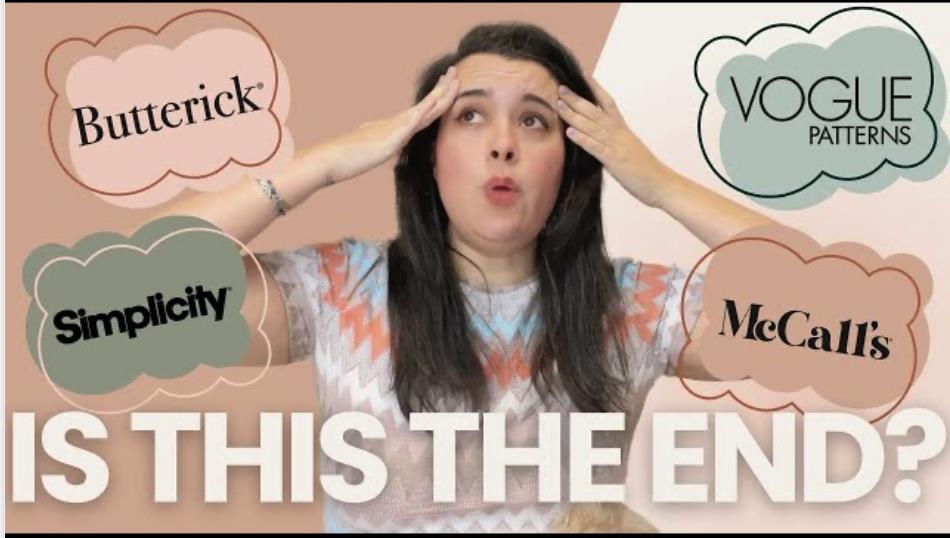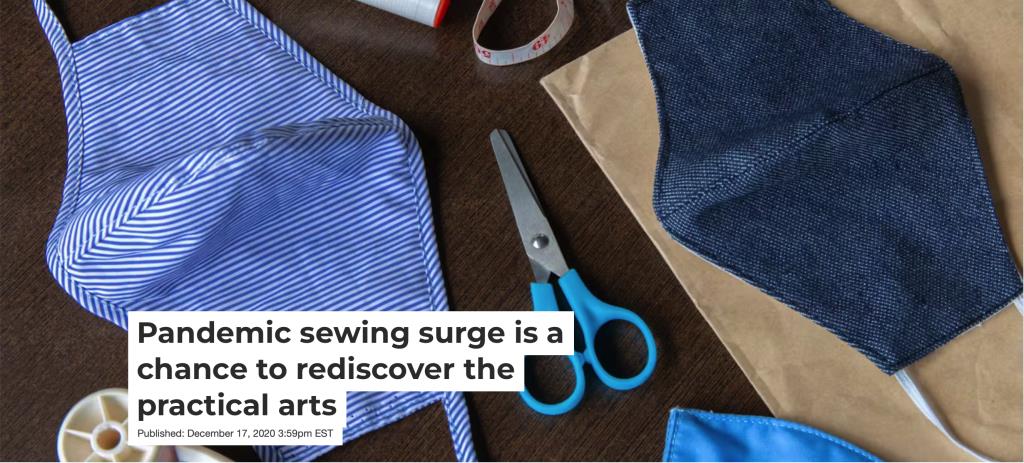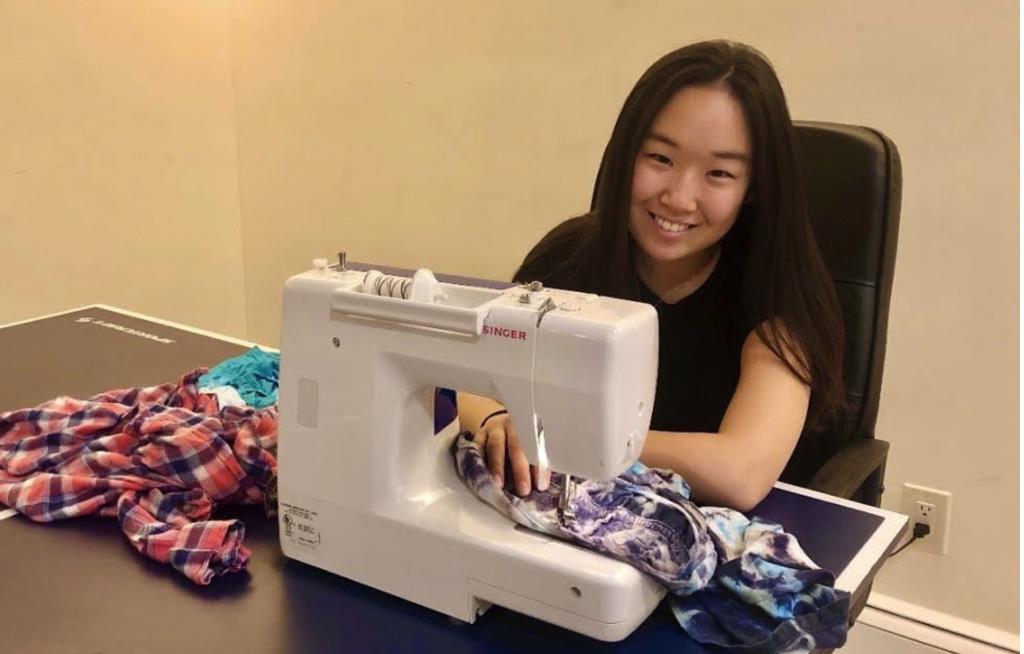The ‘Big 4’ pattern companies Vogue, Butterick, McCalls & Simplicity (New Look) were sold to a liquidator for $1 on May 30th, 2025.
Once upon a time, in the not-so-distant past, the whir of a sewing machine was as constant as the hum of a refrigerator. Spools of thread in every shade known to humankind overflowed from biscuit tins, and pattern envelopes multiplied in sideboard drawers like rabbits after a particularly romantic spring. Home sewing was not just a hobby—it was a way of life, a rite of passage.
Grade and high schoolers were taught sewing and, in many cases, budding designers dreamed of attending fashion school. Speaking for myself, I spent my senior year designing and sewing prom dresses for friends. These skills eventually led me to FIT and a 40-year career in the fashion industry.
Back then, sewing circles were the original social networks—no algorithm required. Scissors were passed, gossip was shared, and if you didn’t have a pincushion shaped like a tomato or a seam ripper, you weren’t cool.

Fast forward to May 30th, 2025, when it was announced that the “Big 4” sewing pattern companies (Simplicity, Butterick, McCalls, and Vogue) were sold to a liquidator for $1. IG Design Group Americas, the parent company of these brands, was sold to Hilco Capital, a liquidation firm. The sale effectively means the brands are now under the control of a company that specializes in liquidating assets of struggling businesses. How did this happen?
Blame Fast Fashion: The Great Unraveling
And then, like a rogue snag in your favorite sweater, the era of home sewing began to unravel. Blame globalization, blame polyester, blame that little voice in your head that says, “Why sew when you can buy a new shirt for six bucks at the mall?” For Millennials and Gen Zers, patterns—with their mysterious markings and origami-like folding—became as intimidating as IKEA assembly instructions. The amount of fabric jargon alone could send even the bravest soul running for the nearest department store. Selvage, dart, gusset—are these sewing terms or ingredients for a medieval potion?
Suddenly, sewing a dress at home ceased to be thrifty. Instead, it began to look as practical as churning your own butter. Why spend hours cutting, pinning, and cursing at a wonky zipper, when you could simply click “add to cart” and have three trendy tops delivered by Friday?
But somewhere between the rise of fast fashion and the arrival of next-day delivery, we seem to have lost our stitch. Today, let us pour one out for the demise of home sewing—a craft that once stitched together families, wardrobes, and, occasionally, the very seams of society.

Pandemic sewing surge (Image credit: The Conversation.com)
A Renaissance: Sustainable & DIY Fashion Movements & Pandemic
The creation of organizations like the World Fair Trade Organization (1989) and the establishment of certifications such as GOTS (Global Organic Textile Standard) substantiated the push for accountability, fair wages, and sustainable materials in fashion, inspiring the DIY movement. Thanks to thrifting, recycling and upcycling, Instagram is awash with influencers who can conjure a dress from a vintage bedsheet, and hashtags like #MeMadeMay or #SewingCommunity still draw thousands of posts.
Lockdowns during the pandemic saw a spike in sales of sewing machines and supplies. Suddenly, everyone wanted to make masks, or perhaps finally hem those curtains purchased in a fit of optimism in 2012.

Kelly Kim of Cornell University (Image credit: HomeSewingCornell.com)
What We Lose When We Lose Home Sewing
There is something quietly radical about stitching your own clothes—a sense of agency, creativity, and connection to the past. Home sewing taught generations how to create, repair, and personalize. It was the original form of sustainable fashion, long before “upcycling” became a buzzword.
When we lose home sewing, we lose the tiny acts of rebellion that said, “I won’t settle for off-the-rack.” We surrender an opportunity to slow down, to make something beautiful, and to understand that perfection is overrated—that a crooked seam can be a thing of pride.
So, What’s Next? A Prediction
With the future of the Big 4 pattern companies in limbo, I predict that new business opportunities will open-up for independent pattern makers to market their own digital pattern designs to home sewers. Watch for then on Pinterest, Instagram, TikTok, YouTube and in trade mags like Threads.
Watch as affordable fashion education libraries, such as University of Fashion, with their beginner, intermediate and advanced on-demand lessons in design and manufacturing become even bigger, as the go-to resource for creatives to learn sewing and the 3D’s: draping, drafting and drawing.
So, here’s to the seamstresses and tailors who came before us, to the calluses on their fingers and the ingenuity in their designs. Here’s to the menders, the makers, the hemmers, and the dreamers. Home sewing may be on hiatus, but its spirit lives on—quietly, stubbornly, and sometimes, gloriously, in the oddest places. Like your great-aunt’s linen closet, or your own heart, whenever you sew on a stray button and save the day.
Long live the stitch, no matter how small.
-------------------------------------
By: Francesca Sterlacci
Title: R.I.P. Big 4 Pattern Companies – Now What?
Sourced From: www.universityoffashion.com/blog/r-i-p-big-4-pattern-companies-now-what/
Published Date: Sat, 19 Jul 2025 17:14:28 +0000
Read More
 FestivalsMusicNew ReleasesArtistsFashion & ClothingVideosPrivacy PolicyTerms And Conditions
FestivalsMusicNew ReleasesArtistsFashion & ClothingVideosPrivacy PolicyTerms And Conditions
